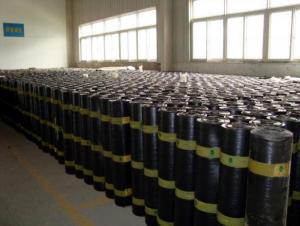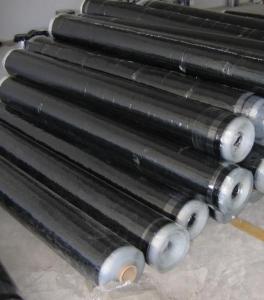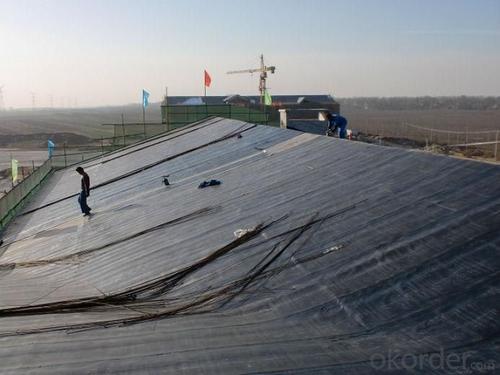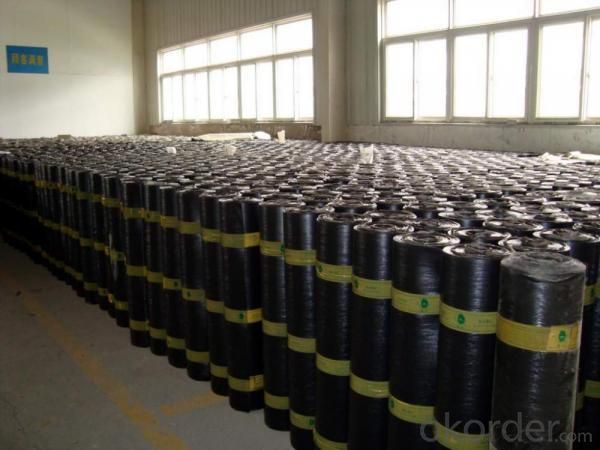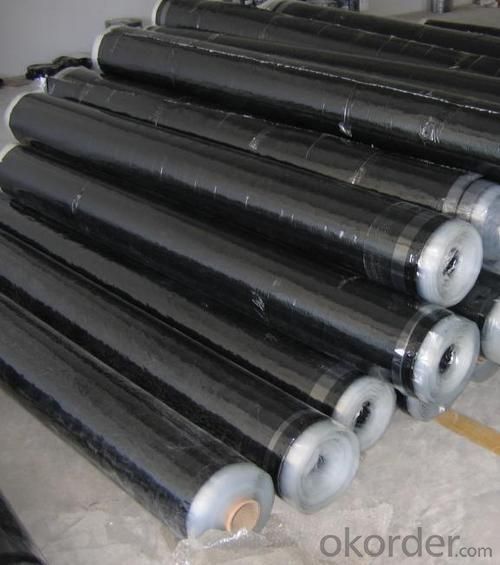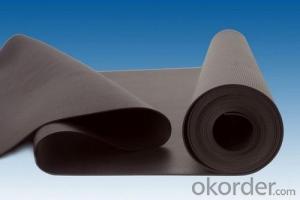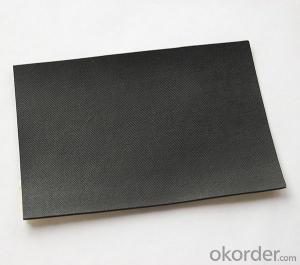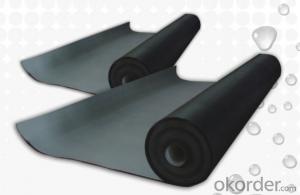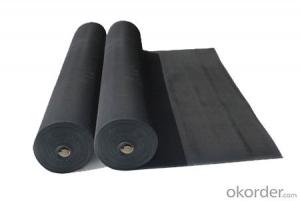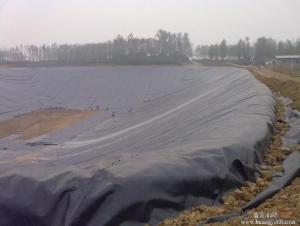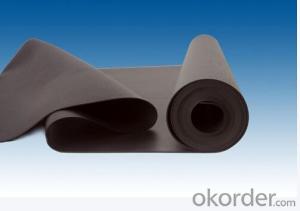EPDM Waterproofing Membrane For Construction Field
- Loading Port:
- Qingdao, China
- Payment Terms:
- TT or LC
- Min Order Qty:
- 2000 M2 m²
- Supply Capability:
- Above 10000000M2 Per Year m²/month
OKorder Service Pledge
OKorder Financial Service
You Might Also Like
Detailed Specification for EPDM Waterproofing Membrane:
|
Type |
EPDM Waterproof Membrane | |||
|
Material |
EPDM Rubber | |||
|
Thickness |
1.0mm |
1.2mm |
1.5mm |
2.0mm |
|
Size |
1.2m(width) * 20m(length)/roll, Weldale could 4m width | |||
|
Type |
Vulcanized & Weldable | |||
|
Pattern |
Non-reinforced(homogeneous) | |||
|
Packing |
24sqm--80sqm/roll, with plastic bag | |||
|
Color |
Black | |||
|
Application |
Roof, basement, pond, Lake, steel structure roof, swimming pool, underground, tunnel, etc | |||
Product Features of EPDM Waterproofing Membrane:
1. the excellent anti-aging, in the long term light, humidity, cold use of the natural
environment, small changes in physical properties, used in the temperature:
From -50 degree Celsius to +80degree Celsious.
2.with outstanding ozone resistance, resistance to ultraviolet and atmospheric corrosion
of many chemical corrosive substances.
3. high tensile strength, high elongation, high flexibility, capable of sustaining
a puncture of hard material, good anti-crack, high adaptability of the grass roots'
contraction and the crack and deformation, and give full play to extend the
performance, playing the role of waterproofing.
4.long lifetime, high durability can achieve more than 25 years.
5.the cold construction operation, no environment pollution and simple operation.
Application Pictures of EPDM Waterproofing Membrane:
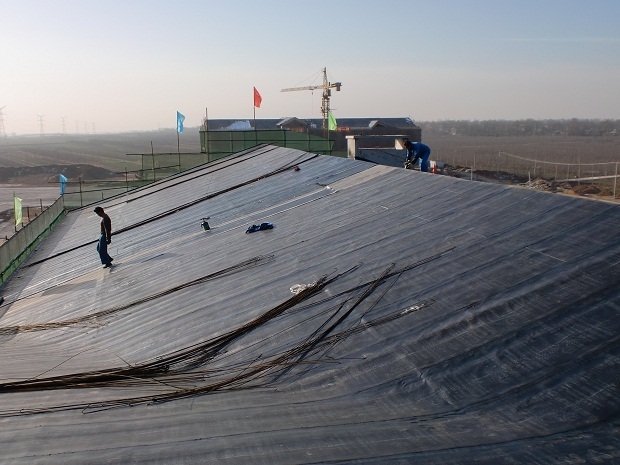
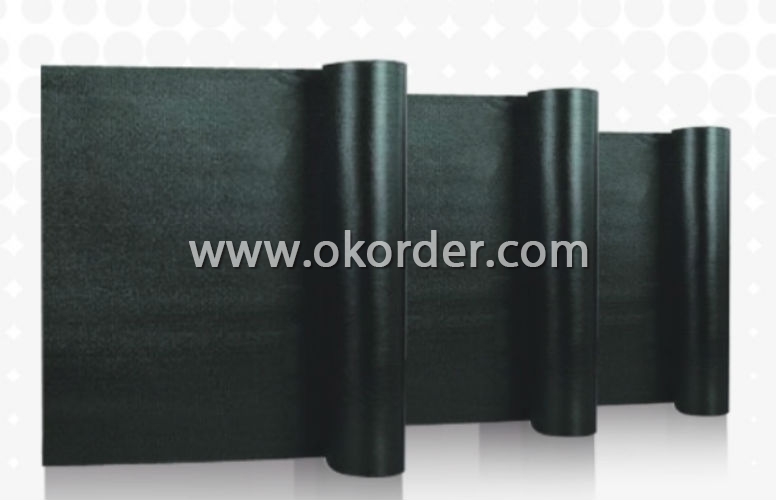
- Q: Does a waterproofing membrane require any curing time before it can be exposed to water?
- Before being exposed to water, a waterproofing membrane does require a curing time. This curing time is necessary for the membrane to fully bond and reach its maximum strength, durability, and waterproofing capabilities. The specific duration of the curing time may vary depending on the type of membrane and the instructions provided by the manufacturer. To ensure proper curing and effective protection against water intrusion, it is crucial to adhere to these instructions. Neglecting to allow sufficient curing time can compromise the membrane's effectiveness, potentially resulting in leaks or other related issues. Therefore, it is highly recommended to wait until the specified curing time has passed before exposing the waterproofing membrane to water.
- Q: Can a waterproofing membrane be used in high-rise buildings?
- Yes, a waterproofing membrane can be used in high-rise buildings. In fact, it is highly recommended to incorporate a waterproofing system in high-rise buildings to protect them from the damaging effects of water infiltration. Waterproofing membranes are designed to provide a barrier against water ingress, preventing leaks and moisture damage to the structure. They are commonly used on roofs, basements, foundations, and other areas that are exposed to water or moisture. The selection of the appropriate waterproofing membrane will depend on various factors such as the specific building design, construction materials, and environmental conditions. It is important to consult with experienced waterproofing professionals to determine the most suitable membrane system for a high-rise building to ensure long-term protection against water-related issues.
- Q: Can waterproofing membranes be used on balconies?
- Yes, waterproofing membranes can be used on balconies. These membranes are designed to provide a protective barrier against moisture, preventing water leaks and damage to the balcony structure. Waterproofing membranes are commonly used in balcony construction and renovation projects to ensure long-lasting water resistance and durability.
- Q: Can a waterproofing membrane be used on wood surfaces?
- Yes, a waterproofing membrane can be used on wood surfaces. It provides a protective barrier that prevents water from penetrating the wood, thereby prolonging its lifespan and preventing damage from moisture.
- Q: Can a waterproofing membrane be used in conjunction with paint or coatings?
- Yes, a waterproofing membrane can be used in conjunction with paint or coatings. In fact, combining a waterproofing membrane with paint or coatings is a common practice in many construction and renovation projects. The waterproofing membrane provides a barrier against moisture and prevents water infiltration, while the paint or coatings add aesthetic appeal and can provide additional protection against UV rays, weathering, and chemical exposure. By using both in conjunction, you can achieve a dual-layer protection system that ensures long-lasting durability and water resistance. However, it is essential to ensure compatibility between the waterproofing membrane and the paint or coatings to avoid any adverse reactions or loss of effectiveness. Consult with a professional or manufacturer guidelines to determine the best combination and application process for your specific project.
- Q: Can a waterproofing membrane be covered or concealed by other finishes or materials?
- Yes, a waterproofing membrane can be covered or concealed by other finishes or materials. This is commonly done in construction projects to create a visually appealing and functional surface while still ensuring the waterproofing integrity of the structure.
- Q: Sbs waterproof sheet and app coil how to see it
- APP is a plastic body modified asphalt waterproofing membrane referred to, usually also known as APP modified asphalt waterproofing membrane, is a polyester felt, glass fiber mat or glass fiber reinforced polyester felt for the fetal base, random poly (APAO, APO, etc.) as a petroleum asphalt modifier, both sides covered with insulating materials made of building waterproofing membrane, product markings according to the following procedures: name, model, fetal base , The upper surface material, the lower surface material, the thickness, the area and the standard number, for example: 3mm thick, 10 square meters, the upper surface of the mineral pellets, the lower surface of the polyethylene film, polyester fetal base, Modified asphalt waterproofing membrane marked as: APP I PY M PE 3 10 GB18243-2008.
- Q: Can a waterproofing membrane be used in laundry rooms?
- Indeed, the utilization of a waterproofing membrane is viable in laundry rooms. These spaces are frequently subjected to water and humidity due to the presence of washing machines, sinks, and various water-related activities. The installation of a waterproofing membrane within the laundry room serves to avert any water harm that may affect the walls, floors, and other essential components. It functions as a barrier that obstructs water infiltration, guaranteeing that any accumulated water or moisture within the room does not permeate the underlying surfaces. This proves particularly advantageous for laundry rooms situated on higher levels or in regions prone to excessive humidity or flooding. By employing a waterproofing membrane, homeowners can safeguard their laundry rooms against potential issues associated with water, such as the growth of mold, deterioration, or structural impairment.
- Q: How does a waterproofing membrane handle structural cracks?
- A waterproofing membrane is designed to handle structural cracks by providing a barrier that prevents water from penetrating the cracks and causing damage to the underlying structure. The membrane is typically applied to the surface of a structure and acts as a protective layer that seals the cracks, preventing water infiltration. When a structural crack occurs, the waterproofing membrane is able to bridge the gap and create a waterproof seal. This is achieved through the use of flexible materials that can stretch and move with the structure, accommodating any movements or shifts that may occur over time. The membrane is also able to adhere to a variety of surfaces, ensuring a tight and secure bond that prevents water from seeping through the cracks. Additionally, some waterproofing membranes have the ability to self-heal. This means that if a crack does occur, the membrane has the ability to repair itself, closing the gap and maintaining its waterproofing capabilities. Overall, a waterproofing membrane is an effective solution for handling structural cracks as it provides a durable and flexible barrier that prevents water intrusion and protects the integrity of the structure. It is important to choose the appropriate type of membrane for the specific structural requirements and to ensure proper installation to achieve the desired waterproofing results.
- Q: Can a waterproofing membrane be used in areas with chemical exposure?
- Yes, a waterproofing membrane can be used in areas with chemical exposure. However, it is essential to choose a membrane specifically designed to withstand the chemicals present in the environment. The membrane should have chemical resistance properties and be compatible with the specific chemicals it will be exposed to in order to provide effective protection against water damage and chemical degradation.
1. Manufacturer Overview
| Location | Beijing, China |
| Year Established | 1998 |
| Annual Output Value | Above US$ 30 Million |
| Main Markets | Mid East; Eastern Europe; North America; Southeast Asia |
| Company Certifications | ISO 9001 |
2. Manufacturer Certificates
| a) Certification Name | |
| Range | |
| Reference | |
| Validity Period |
3. Manufacturer Capability
| a) Trade Capacity | |
| Nearest Port | Tianjin |
| Export Percentage | 41% - 50% |
| No.of Employees in Trade Department | Above 50 People |
| Language Spoken: | English; Chinese |
| b) Factory Information | |
| Factory Size: | Above 600,000 square meters |
| No. of Production Lines | Above 10 |
| Contract Manufacturing | OEM Service Offered; Design Service Offered |
| Product Price Range | Negotiated |
Send your message to us
EPDM Waterproofing Membrane For Construction Field
- Loading Port:
- Qingdao, China
- Payment Terms:
- TT or LC
- Min Order Qty:
- 2000 M2 m²
- Supply Capability:
- Above 10000000M2 Per Year m²/month
OKorder Service Pledge
OKorder Financial Service
Similar products
Hot products
Hot Searches
Related keywords

